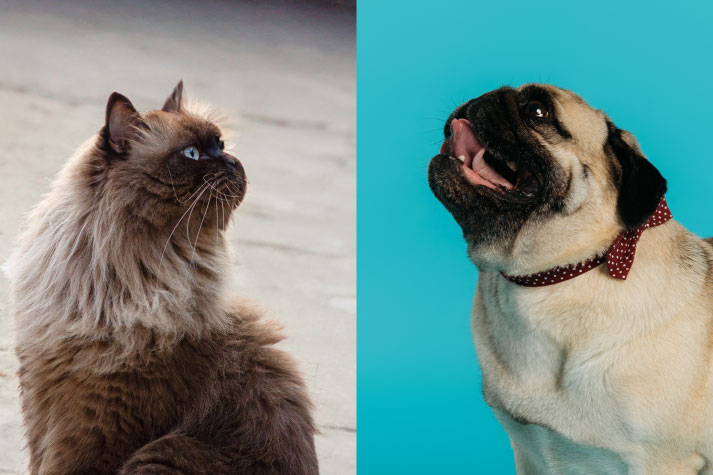


12 May
There is no denying the appeal of flat-faced pets. Whether it is the snub-nosed charm of a Pug, the dignified wrinkles of a Bulldog, or the plush-faced elegance of a Persian cat, these animals tug at our heartstrings with their charming and unique looks.
Over time, this fascination has led breeders to highlight certain features; shortened snouts, large eyes, and broad skulls. But these traits come at a price. Beneath the cuteness lies a condition with serious health implications: brachycephaly.
The word "brachycephaly" comes from the Greek for "short head." It refers to a skull formation where the face is compressed, giving these pets their signature look. But this shortened structure often leads to distorted anatomy; tight airways, misaligned jaws, and compromised organ function.
Like pets with longer muzzles, brachycephalic animals have the same number of internal components (nasal passages, soft tissue, teeth) but everything is packed into a much smaller space. This compression causes several issues, especially around breathing and digestion.
The most visible sign of brachycephaly is difficulty breathing. Affected pets often exhibit:
These symptoms are tied to several internal abnormalities:
In cats, narrowed nostrils and extended soft palates are the most commonly seen problems. While some cases are manageable, others require surgical intervention to improve quality of life.
Brachycephalic pets often face a cascade of health issues beyond breathing difficulties. Their shortened skulls can cause:
Dental crowding and underbites: Dogs have 42 teeth, cats have 30, and in flat-faced breeds, there's just not enough space to house them properly. This often leads to overlapping teeth, gum disease, and difficulty chewing.
While severity varies, the following breeds are widely recognized as brachycephalic:
Each breed has its own degree of risk, and mixed breeds may display milder traits depending on their lineage.
One of the most dangerous complications for brachycephalic pets is their inability to regulate body temperature. Dogs and cats don't sweat like humans. Instead, they cool down by panting. For long-nosed breeds, air flows efficiently over the tongue and helps dissipate heat. For flat-faced pets, this system is compromised. They can quickly overheat, especially in warm weather or under stress, which can lead to fatal heatstroke in a matter of minutes.
Traveling by air poses serious risks for brachycephalic pets. Noise, temperature fluctuations, unfamiliar environments, and limited ventilation in cargo areas can worsen breathing issues. This is especially true in summer, when the risk of heatstroke skyrockets.
Due to these risks, many airlines have implemented breed-specific travel restrictions. Some prohibit snub-nosed pets altogether; others allow them only under strict conditions.
For pet parents In Dubai planning a trip, it is essential to:
In some cases, your vet may recommend avoiding travel altogether, especially if the prevailing weather conditions are too hot.
Flat-faced pets have an undeniable charm, but they also require special care. Brachycephalic breeds often struggle with breathing, digestion, and heat regulation; challenges that can worsen with stress or travel. If you are a pet parent to one of these breeds, awareness is your first tool. The next is proactive care, managing their environment, diet, and activity, and making smart choices about travel and exposure to heat. Make sure to choose a pet friendly airline, or consider a pet relocation service in Dubai to give your snub-nosed friend the safest and most comfortable journey possible.

AUTHOR’S BIO
ARSH BHARDWAJ
I am passionate about language, storytelling and the human urge to connect Having paid close attention to marketing and branding as a craft for some time, I'm eager as ever to indulge my passion for prose.